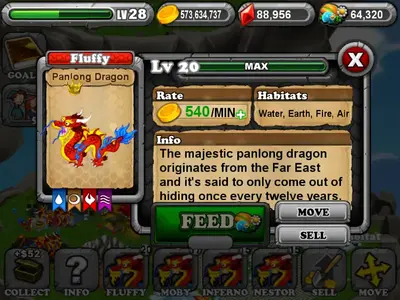for your inspiration:
"The "Nine Classical Types" of dragons as depicted in Chinese art and literature, are:
- Tianlong, The Celestial Dragon
- Shenlong, the Spiritual Dragon
- Fucanglong, the Dragon of Hidden Treasures
- Dilong, the Underground Dragon
- Yinglong, the Winged Dragon
- Jiaolong, the Horned Dragon
- Panlong, the Coiling Dragon: inhabits the waters
- Huanglong, Yellow Dragon, which emerged from the River Luo to show Fuxi the elements of writing
- Dragon King
The first four mentioned are probably the most recognizable of the nine in Chinese culture. The celestial dragon protects the palaces of the gods, while the spiritual dragon commands the winds and rain. As its name states, the dragon of underground treasure guards wealth, while the the underground dragon controls the geological events of the Earth.[SUP]
[6][/SUP]
Besides these,
there are Nine Dragon Children, which feature prominently in architectural and monumental decorations:
- The first son is called bixi, which looks like a giant tortoise and is good at carrying weight. It is often found as the carved stone base of monumental tablets.
- The second son is called chiwen, which looks like a beast and likes to see very far. It is always found on the roof.
- The third son is called pulao, which looks like a small dragon, and likes to roar. Thus it is always found on bells.
- The fourth son is called bi'an, which looks like a tiger, and is powerful. It is often found on prison doors to frighten the prisoners.
- The fifth son is called taotie, which loves to eat and is found on food-related wares.
- The sixth son is called baxia, which likes to be in water, and is found on bridges.
- The seventh son is called yazi, which likes to kill, and is found on swords and knives.
- The eighth son is called suanni, which looks like a lion and likes smoke as well as having an affinity for fireworks. It is usually found on incense burners.
- The youngest is called jiaotu, which looks like a conch or clam and does not like to be disturbed. It is used on the front door or the doorstep."
~From the New world encyclopedia
. What about frostfire and iceberg. Am I running out of time for them????????

